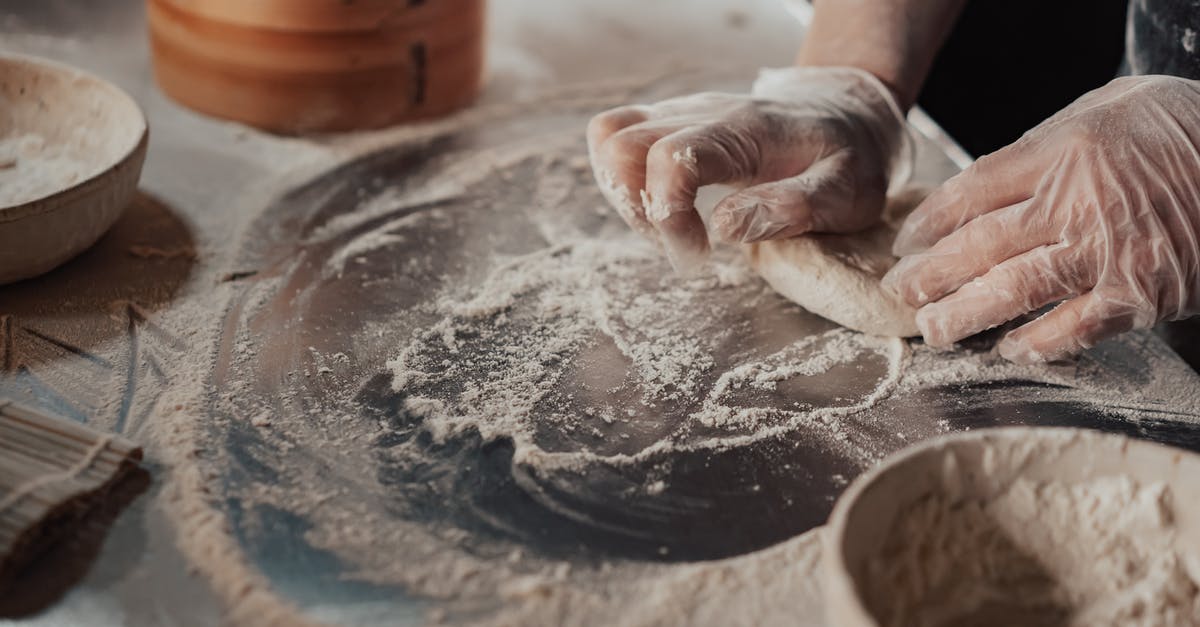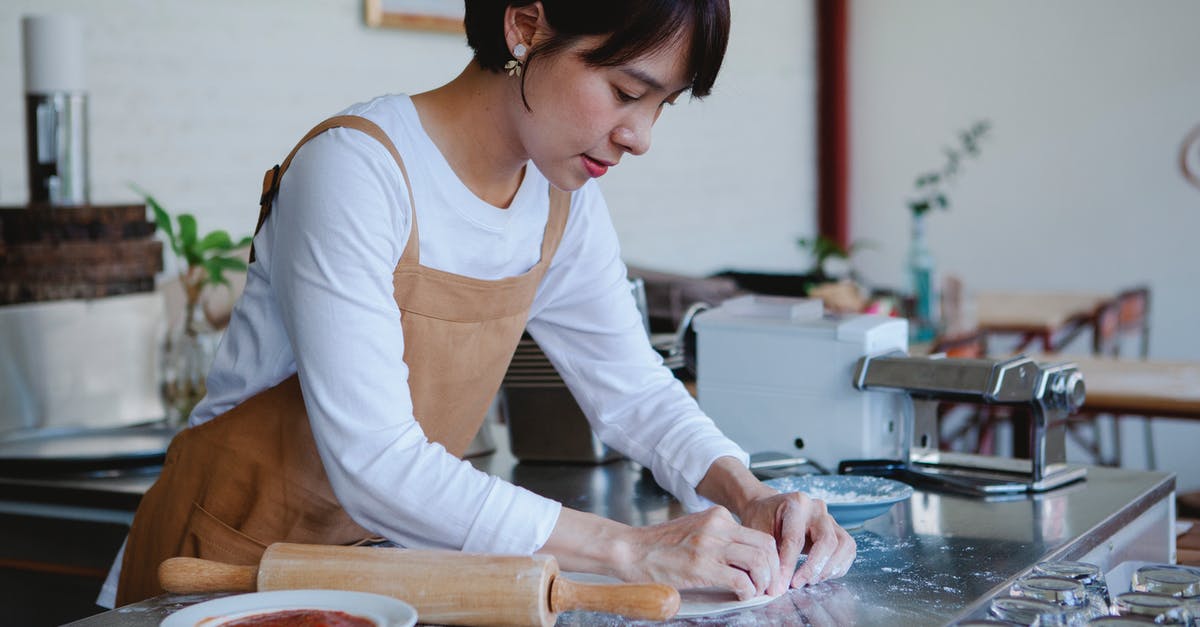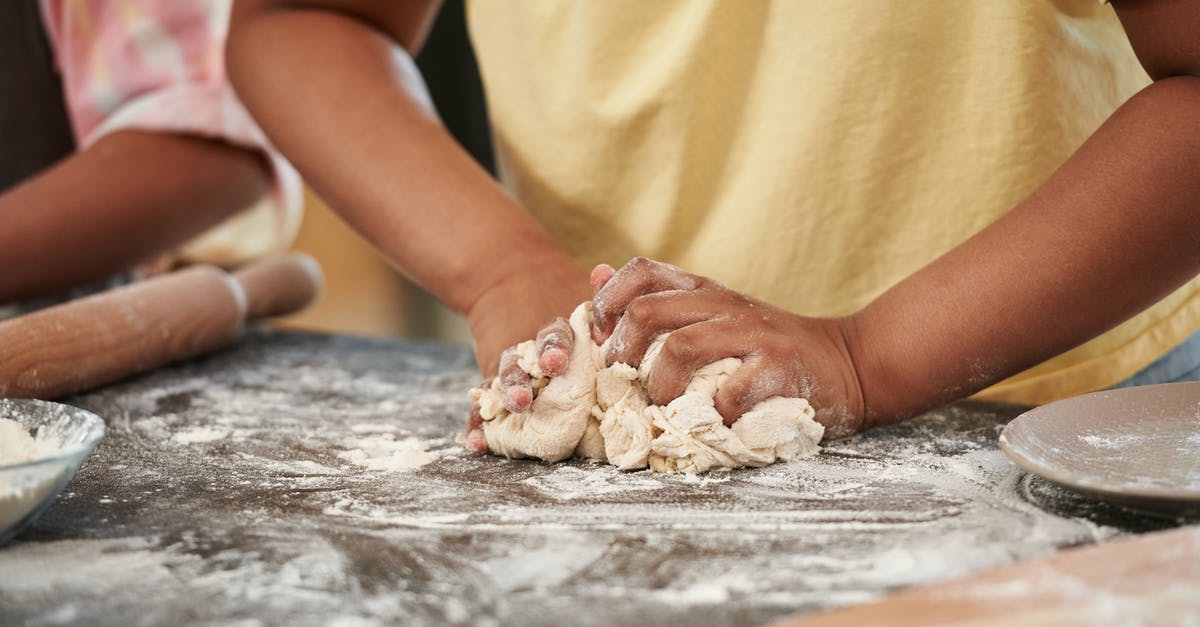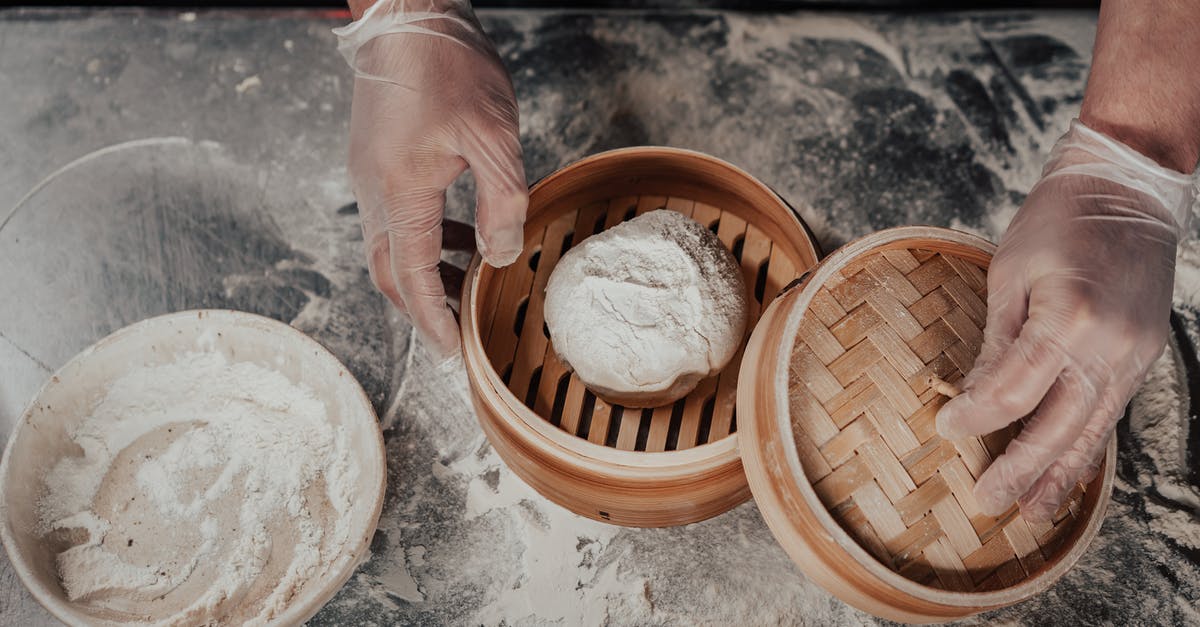What would cause dough not to rise while making no-knead bread?

I have made both the classic and the speedy version of the no-knead bread recipe provided by Mark Bittman in the New York Times. The one change I make is that I use active dry yeast rather than instant, simply because I don't typically have the latter at hand. I measure out the amount of water the recipe calls for, take out a quarter cup or so, heat it for a few seconds in the microwave so that it is warm (but not hot), dissolve the yeast in the warmed water, then add the dissolved yeast and the rest of the water to the flour to make the dough.
In the video that accompanies the speedy bread recipe, Jim Lahey suggests using hot water and adding a couple drops of red wine vinegar. The last couple of times I tried the recipe, I tried those suggestions. I separated out the water for dissolving the yeast and heated the rest beyond merely warming as needed for the yeast. I warmed the water for the yeast as usual. I added the hot water and a couple drops vinegar to the flour and gave it a couple of stirs first before adding the yeast water, as I thought the yeast would die if it came in contact with the hot water.
Both times, the bread was disastrous. The dough simply failed to rise sufficiently. Instead of more than doubling in size in four hours, it looked as though it had gotten to perhaps 1.5 times the original size, and it was quite smooth, like kneaded dough, instead of bubbly and stringy as the no-knead dough is supposed to be.
The first time, I thought I had made a mistake and added too little yeast, so I didn't think too much about it. The second time, though, I know I measured out the right amount of yeast and I was pretty careful in following the procedure. So I'm trying to account for the lack of rising. A little research suggested that perhaps the vinegar didn't help the yeast to rise, as it ordinarily would, but overwhelmed and killed the yeast.
I used a stainless steel bowl for mixing dough and letting it rise. I know that using stainless steel is generally fine, but perhaps it's a bad idea to add vinegar to the dough if I'm using stainless steel? Would this account for the lack of rise in the dough?
What other reasons might there be for the failure of the dough to rise? I tested my yeast with sugar dissolved in water and it's fine. Thanks!
Best Answer
First and foremost, the classic recipes states quite clearly, "Dough is ready when its surface is dotted with bubbles." Expecting microorganisms to do their work in precisely the same amount of time, every time, requires a good bit of precision on your part.
Why the slow rise? Almost definitely a yeast problem. The question is, which kind of yeast problem? Acid can kill yeast, heat can kill yeast, salt can kill yeast, sitting in a package forever can kill them, and there are other, less likely scenarios too.
Are you using jarred active dry yeast or individual packets? You mention testing it, but what technique did you use, a little water and sugar, watch for bubbles? You can (and probably should) do this at the beginning of the recipe, so that your yeast is kickstarted into alertness.
Stainless steel is not the problem. It's non-reactive.
Vinegar is likely to slow the growth, so you probably just need to give it more time. The best way to judge readiness is by the dough, not by the clock.
Another factor is that a few degrees difference can make a difference in the rate of yeast growth and CO2 production: "With glucose as growth-limiting substrate in the chemostat and aerobic conditions in the respirometer, the carbon dioxide output was found to be higher as temperature at which the organisms were cultured increased from 25 to 39" --Journal of Microbiosology
Hope these help, but I think there's not just one answer here.
Pictures about "What would cause dough not to rise while making no-knead bread?"



Quick Answer about "What would cause dough not to rise while making no-knead bread?"
Knead the dough properly. Too little, and you may not distribute the yeast through the dough. The dough will then be too weak to be able to rise. Too much kneading may make the dough so tough that it cannot expand. The dough should feel smooth and elastic, not tight like a rubber ball, or soft like biscuit dough.Why did my no knead bread not rise?
Editor: Shani, it sounds that your yeast may be too old and expired, or perhaps you're not letting the dough rest adequately after shaping and before baking. Take a look at our no-knead bread step-by-step (with pictures!) and compare your process; you may find a way to tweak it.Why is my dough no rising?
8 reasons why your bread dough is not rising:Yeast needs to be warm - not too hot, not too cold. Yeast is too cold If the other ingredients are too cold, it could cause some of the yeast to die. Was the dough kneaded properly? Dough may not have been kneaded enough.Why does my no knead bread come out flat?
If your bread is flat and has a fine texture, that probably means it's underfermented. If it's flat and kind of gummy, then it was probably overfermented. Ferment it too much, you lose volume. Don't ferment it enough, it just becomes a pancake on its way into the oven.How to Fix Dough That Won't Rise
More answers regarding what would cause dough not to rise while making no-knead bread?
Answer 2
I find adding about a teaspoon of sugar to the warm yeast mixture will help the yeast grow, vinegar does the opposite. Also, take into consideration the weather, humidity and rainy days are sometimes a disaster for rising bread.
Answer 3
My experience when the dough doesn't rise enough is that I haven't added enough water (assuming of course that your yeast is still good).
Sources: Stack Exchange - This article follows the attribution requirements of Stack Exchange and is licensed under CC BY-SA 3.0.
Images: Mikhail Nilov, Antonius Ferret, Andy Barbour, Mikhail Nilov
